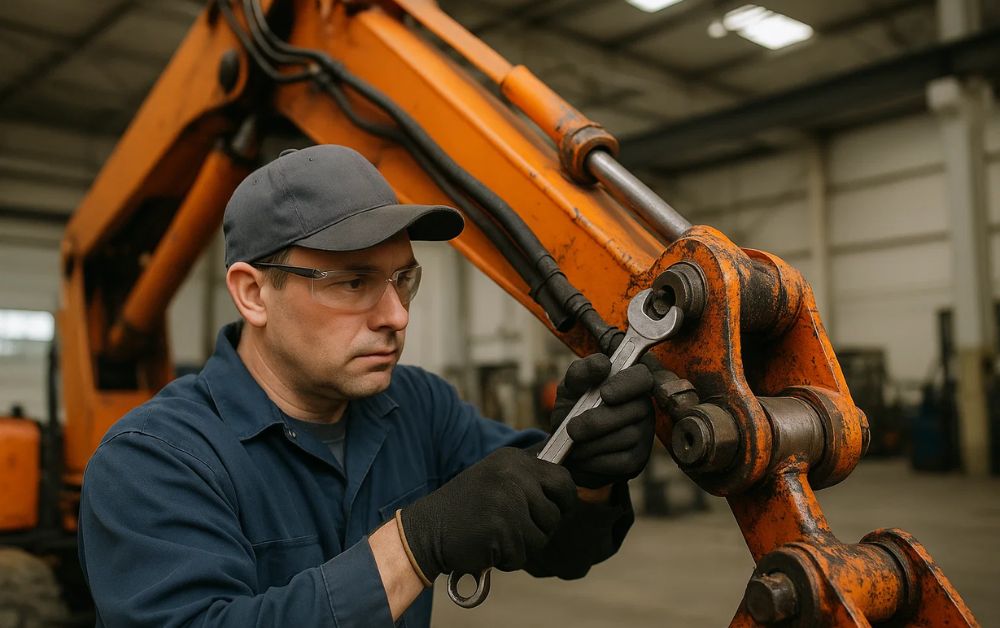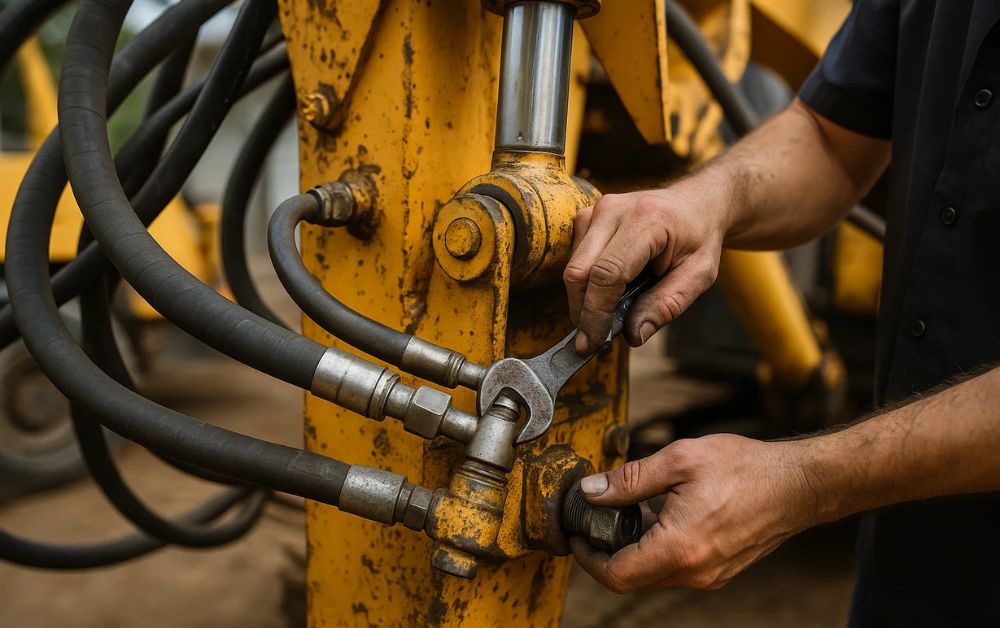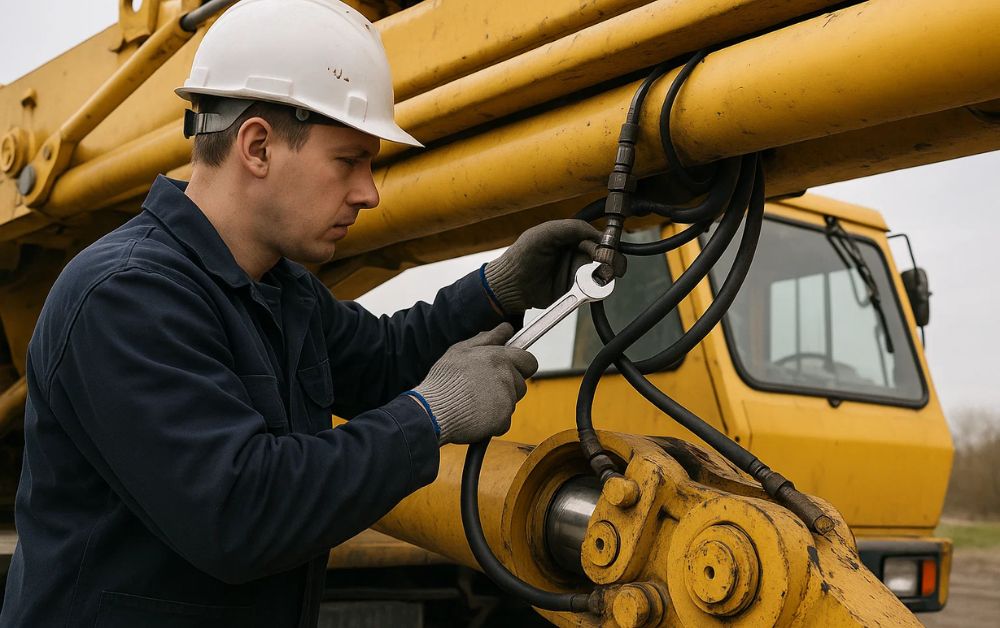Hydraulic cranes are a fundamental part of modern construction, shipping, mining, and manufacturing industries. Their ability to lift and transport heavy loads with precision and ease makes them indispensable to many operations. However, to maintain their performance, safety, and efficiency, regular maintenance and Hydraulic Cranes Repair is essential. For every crane operator, understanding how hydraulic cranes work, when they require repair, and how to ensure their longevity can save both time and money, and prevent serious hazards.
This comprehensive guide breaks down the essentials of Hydraulic Cranes Repair—from recognizing early warning signs to understanding the repair process and selecting the right service provider.

Understanding Hydraulic Cranes
Hydraulic cranes use pressurized fluid to generate lifting force. The key components in these systems include:
- Hydraulic pumps
- Cylinders and actuators
- Hydraulic fluid
- Control valves
- Hoses and seals
These elements work in coordination to perform controlled lifting operations. Any damage or malfunction in one part of the system can lead to performance degradation or even system failure, making Hydraulic Cranes Repair a necessary part of crane ownership and operation.
Common Issues That Require Hydraulic Cranes Repair
Despite being built for heavy-duty tasks, hydraulic cranes are subject to wear and tear. Recognizing early signs of failure can help operators take timely action. Some of the most common issues include:
1.Hydraulic Leaks
One of the most frequent problems. Leaks can occur in hoses, fittings, seals, or valves, resulting in loss of pressure and performance.
2.Slow or Jerky Movements
When a crane’s motion becomes erratic or unusually slow, it often signals problems with fluid flow or actuator function.
3.Overheating Hydraulic Fluid
This is often due to clogged filters, insufficient fluid levels, or faulty cooling systems. Overheating fluid can lead to component damage if not addressed.
4.Noisy Operation
Grinding, knocking, or whistling sounds can be indicators of trapped air in the system, bearing wear, or pump failure.
5.Decreased Lifting Power
If the crane is struggling to lift loads it previously handled with ease, it may be time for a system inspection and Hydraulic Cranes Repair.
Why Timely Repair is Critical
Delaying Hydraulic Cranes Repair can have serious consequences. What starts as a minor leak or pressure loss can lead to catastrophic failure if ignored. Some of the major risks include:
- Increased downtime due to full system failure
- Safety hazards for operators and bystanders
- Costly repairs that could have been avoided with early intervention
- Reduced productivity and delays in project timelines
- Shortened equipment lifespan
Timely repair ensures the hydraulic system runs efficiently and safely, reducing long-term costs and keeping operations on track.
Steps Involved in Hydraulic Cranes Repair
Understanding the repair process can help operators communicate better with service technicians and ensure thorough restoration. A standard Hydraulic Cranes Repair may involve the following steps:
1.Initial Diagnosis
Technicians perform visual inspections and pressure tests to identify the fault. Advanced diagnostics may include thermal imaging and flow analysis.
2.Component Disassembly
Faulty parts such as pumps, valves, cylinders, or hoses are dismantled for further inspection.
3.Cleaning and Replacement
Accumulated dirt and debris are cleaned, and worn-out components are replaced with genuine, OEM-approved parts.
4.System Reassembly and Testing
Once repaired, the system is reassembled and tested under load to ensure full operational integrity.
5.Preventive Maintenance Planning
A good repair service will also recommend maintenance steps to prevent similar issues in the future.
Preventive Maintenance Tips
Operators play a key role in prolonging the life of their equipment. Alongside professional Hydraulic Cranes Repair, regular maintenance is essential:
- Check fluid levels and quality regularly
- Inspect hoses and seals for signs of wear or leakage
- Replace filters as per manufacturer guidelines
- Monitor system pressure during operations
- Keep the system clean and free of debris
Following a maintenance schedule helps detect issues early and minimizes unexpected breakdowns.
Choosing the Right Repair Service
Not all repair providers are the same. When selecting a service for Hydraulic Cranes Repair, consider the following:
- Experience and Expertise: Choose a provider with a proven track record in hydraulic system repair.
- Availability of Genuine Parts: Using non-genuine parts may save money in the short term but can reduce system life.
- Diagnostic Capabilities: Modern equipment and testing tools result in faster and more accurate repairs.
- Turnaround Time: Downtime is expensive. Work with a provider who offers quick, efficient service.
- Support and Follow-up: Ensure the provider offers post-repair support and warranty on their work.

Conclusion: Trust Power Hydraulics for Expert Crane Repairs
When it comes to professional, reliable, and efficient Hydraulic Cranes Repair, Power Hydraulics is a name you can trust. With decades of experience in handling all types of hydraulic equipment, Power Hydraulics offers comprehensive repair solutions that restore performance and extend the life of your crane. From diagnosing complex issues to supplying high-quality parts and offering preventive maintenance advice, Power Hydraulics ensures that your crane operates safely and efficiently, every time. Don’t let equipment failure stall your operations—partner with Power Hydraulics and keep your business moving.



